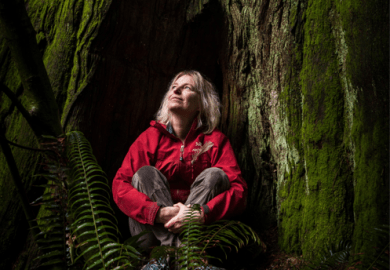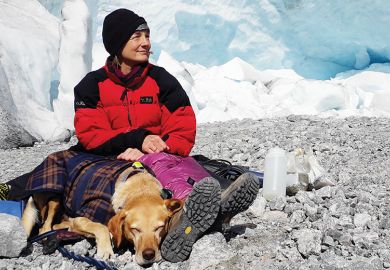Venus is similar in both size and density to Earth, its sister planet, and has been of great interest to astronomers and planetary scientists. Consequently since the early 1960s there have been 21 missions sending spacecraft to Venus in an attempt to gain an understanding of the planet.
Unlike Mars and the moon, however, Venus is shrouded by a thick, dense atmosphere of mainly carbon dioxide that obscures the surface. Russian Venera missions achieved soft landings, returning panoramic views of the planet's surface and in 1978 the first topographic mapping was made by the American Pioneer spacecraft using radar to cut through the clouds. The most recent, the Magellan spacecraft, entered orbit around Venus in August 1990 and over three years, using synthetic aperture radar, returned the most detailed and complete survey of the planet to date. This book is a synthesis of research from past missions and also preliminary interpretations of the huge body of data from the Magellan mission.
Although of a similar size to the earth, vast differences quickly become apparent. The dense atmosphere of carbon dioxide has generated a giant greenhouse effect. The planet's surface clocks in at a searing 482 degrees centigrade and, as a result, water is absent. This has important implications: for example, the surficial processes connected with water such as river systems, oceans and ice sheets that form fluvial sedimentary rocks, so important on earth, are absent on Venus. This has contributed to the lack of weathering and the pristine nature of landforms revealed in the Magellan images. Water trapped within sediments also plays an important role in plate tectonic processes on earth but cannot operate in similar conditions on Venus.
Atmospheric pressure on Venus is almost 100 times greater than on earth. This has an important effect on the types of volcanic activity that occur on Venus. High volatile contents are needed to generate an explosive eruption column. Any large-scale explosive activity would probably be in the form of pyroclastic flows. The dense atmosphere also has an important effect on impact cratering. Smaller bolides apparently become fragmented before impact, due to the dense atmosphere, limiting the minimum size of impact craters on the planet.
Briefly, the analyses of images have shown that the surface of Venus is characterised by several geomorphologically complex units: Highland regions, of which there are a number of types, cover 10-15 per cent of the planet's surface; several types of plains, which form 80 per cent of the surface; ridge and fracture belts, which are linear deformational features; complex ridged terrain termed tesserae which are elevated plateaux comprising a complicated network of ridges and troughs derived from intense tectonic activity; and finally rift and fault zones which are often characterised by broad zones of uplift associated with volcanism, called "volcanic rises".
Some features are uniquely Venusian, in that they are unlike anything seen elsewhere in the solar system. Examples of these are features ranging from 60-2000km across, all extensional volcano-tectonic in origin, termed coronae, novae and arachnoids, that appear to be high heat flow areas probably related to mantle upwelling.
Nevertheless some features have similarities with terrestrial landforms. For example, one of the most common volcanic features, cones and domes, is similar to terrestrial shields. There is clear evidence for extensive flood lavas covering thousands of square kilometres. Volcanism is perhaps the most important geological process occurring on Venus. In addition, ridge and trough terrains have been identified that appear to have undergone compression and low-angle thrusting comparable to folded mountain belts on earth. Furthermore Venus, like earth, appears to be geologically active at present.
Before Magellan, the geological story of Venus was poor. One important question it was hoped Magellan would answer was whether earth-style plate tectonics occur on Venus? If so, global linear belts of deformation and volcanism should be seen. While not randomly distributed, highly deformed areas and volcanic regions on Venus are not concentrated into linear zones, making the possibility of earth-style plate tectonics unlikely. Heat transferral has apparently occurred predominantly via mantle plumes.
The assimilation and interpretation of the Magellan data that covers the whole planet is a massive and daunting task, which the author of this book realises is only at a very preliminary stage. Still in progress is detailed mapping to establish the stratigraphical relations important for a complete geological picture. Nevertheless, this is a useful introductory text for earth and planetary scientists alike. But what should be borne in mind is that many of the ideas and hypotheses in this book will alter and have probably already been superseded in this rapidly changing and exciting field.
Paul Cole is a research fellow, University of London Observatory.
Venus: The Geological Story
Author - Peter Cattermole
ISBN - 1 85728 031 8
Publisher - UCL Press
Price - £25.00
Pages - 256pp
Register to continue
Why register?
- Registration is free and only takes a moment
- Once registered, you can read 3 articles a month
- Sign up for our newsletter
Subscribe
Or subscribe for unlimited access to:
- Unlimited access to news, views, insights & reviews
- Digital editions
- Digital access to THE’s university and college rankings analysis
Already registered or a current subscriber?



